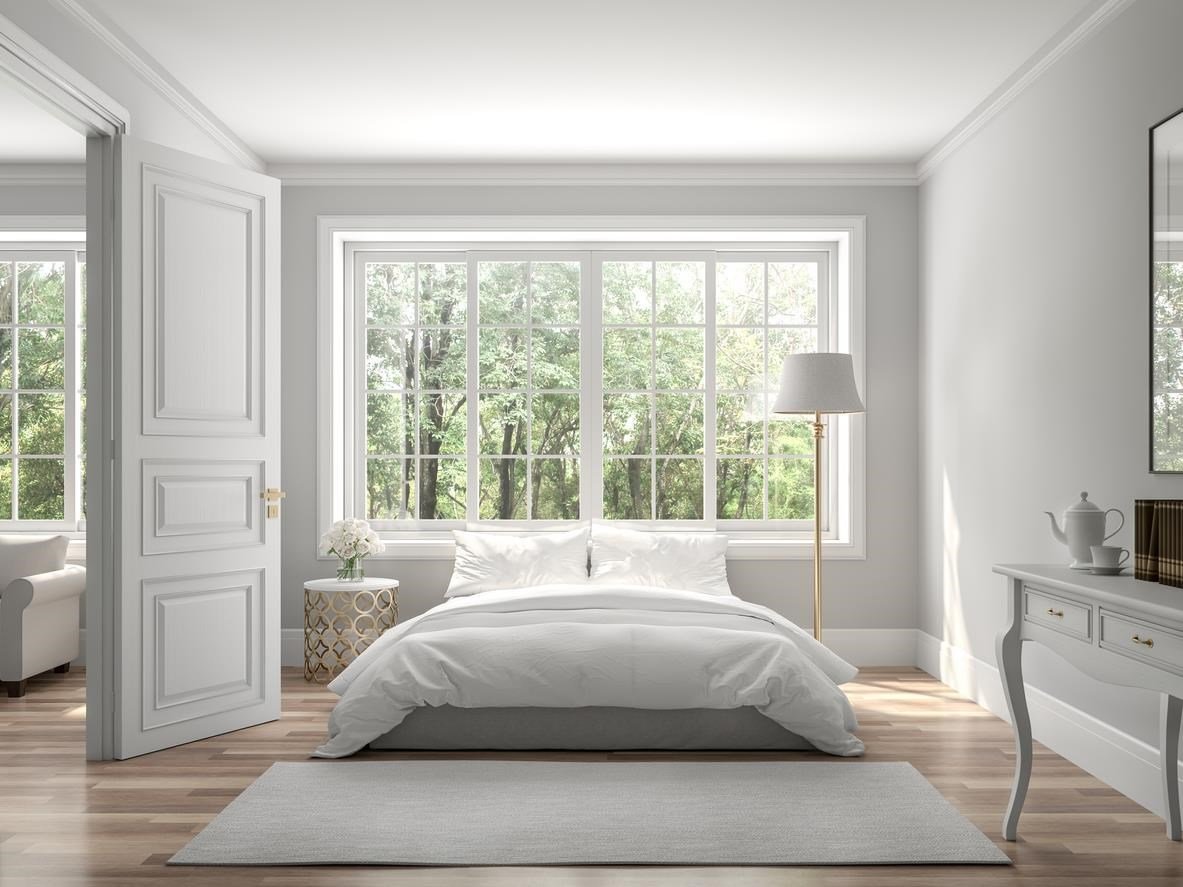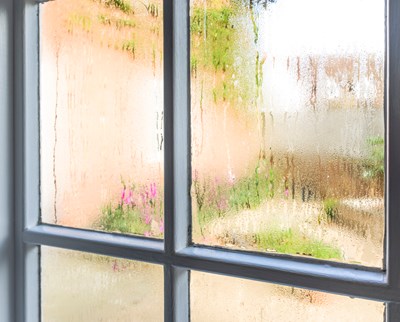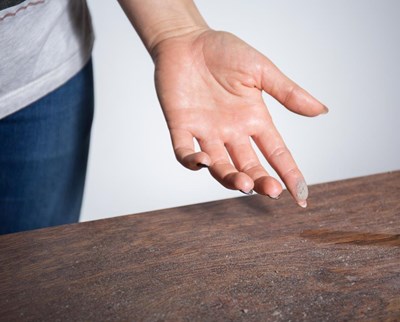
Sneezing, itching, and a runny nose from allergies can interrupt your sleep, ruin a relaxing afternoon, or take the enjoyment out of a meal at home. Allergy symptoms come from your body’s reaction to a foreign substance. Reducing your exposure to allergens may help to reduce allergy symptoms.
Allergens can make their way into your home through open windows and doors, by being carried in on your shoes, clothes, skin, and hair, or from your pet. No matter how allergens end up inside your home, there are ways to reduce them.
How to Reduce Allergens in Your Living Room
The carpets, rugs, curtains, and upholstered furniture that make your living room cozy for you, are also making it cozy for allergens to live. When it comes to reducing allergens in your living room, make sure you are regularly cleaning your floors, checking air filters, dusting furniture, and grooming your pet. Learn more below about how each of these activities may help in your home.
Clean Your Floor
Whether you have hard surface floors or carpeting, the floors in your living room should be cleaned at least once a week. Allergens can be tracked through your house by shoes, and airborne allergens can eventually build up on floors. Hard surface floors may collect dust and pollen that can be easily vacuumed or wiped away, whereas carpeting may embed allergens that may need to be deep cleaned on a regular basis.
If possible, ditch your carpeting for hard-surfaced flooring like tile, laminate, or hardwood flooring. Carpeting is prone to allergen build-up, even when regularly cleaned. If you prefer carpeting in your home and can replace it, consider choosing the low-nap or low-pile kind, which hosts fewer allergens. If you cannot replace the carpeting in your bedroom at all, maintain carpets by vacuuming with a HEPA filter regularly, using spot treatments as needed, and deep cleaning by a professional carpet cleaning service, depending on foot traffic and use.
To learn more about removing mold from carpet and keeping it away read the blog linked here.
Check Your Air Filters
The filters in your home’s HVAC system and return vents capture airborne allergens, and they need to be changed regularly so that the filters work properly, and allergens don’t recirculate. Time between air filter changes depends on the air system and filters in your home. Follow professional advice or the manufacturer recommendations for how often you should change the air filters in your home.
Dust Your Furniture
Dust may seem to build up quickly around your home. Dusting your furniture, and vacuuming upholstery often is one of the many ways to reduce dust and allergens.
Learn more about how to reduce dust in your home here.
Groom Your Pets
Keeping up with your pet’s grooming is good for both owner and pet. Pet fur carries pet dander, which is the allergen that affects those with pet allergies. In addition to dander, pet fur can carry pollen, mold spores, oil from poison ivy and oak and other allergens. Many of these are then released into the air when your pet sheds.
Pet owners often keep pet toys in their living rooms. Pet toys can hold a buildup of dander, fur, and odor, so it is important to clean them regularly.
Learn more about pet dander and how to reduce it in your home here.
How to Reduce Allergens in Your Kitchen
Since we store, prepare, and consume food and drink in the kitchen it is one of the most important places to keep clean. Allergens in your kitchen could end up in food or drink and make its way directly into your body.
Clean Your Refrigerator
It’s always a good idea to clean out your refrigerator as there are potential food spills, odors, and food that has started to decompose. Cleaning your refrigerator regularly will also help you to take inventory of what you have (and its condition). We’ve all been guilty of leaving food in the refrigerator for a little too long. Although mold growth takes longer in the fridge than it does out of the fridge, it still happens. Many people are allergic to mold, and it is especially important to check on foods before you or your family eat them. Additionally, be sure to throw away anything with mold growth or anything that is past its expiration date.
Learn more details on cleaning out your refrigerator here.
Wash Your Dishes Daily
Leaving dirty dishes out too long may lead to mold growth. Not to mention the smell of dirty dishes may also take over your kitchen. For those who do not have the time to wash dishes immediately after use, it is good to get in the habit of cleaning your dishes at least once daily.
Clean Your Cabinets and Countertops
Allergens can settle onto your cabinets, countertops, and other surfaces. While preparing foods, be aware that allergens and other harmful substances on the plates, utensils, and counters can sneak into your food.
How to Reduce Allergens in Your Bedroom
Increased allergy symptoms can mean less sleep or low-quality sleep. The feeling you have after a lack of sleep or quality sleep is not the way you want to wake up each day. This is why it is important to reduce as many allergens from your bedroom as possible.
Switch to Allergen-Proof Bedding
Allergy symptoms may keep you up at night. Your bedding may be the culprit, as it can store many allergens in its fabric. Using allergen-proof bedding such as your pillowcases, mattress pad, cover, and comforter help to reduce the number of allergens you sleep with at night.
Keep Pets Out of the Bedroom
It can be hard to resist bringing your furry friends into the bedroom with you to cuddle. However, even if you’re not allergic to their dander itself, their fur can carry other allergens (like dust and pollen) into your bedroom. It is especially important to keep them off your bed as the fabrics can store any of the allergens that come off their fur.
Shower Before Bed
During the day your clothes, skin, and hair can attract many allergens. Taking a shower before bed and putting on a fresh pair of pajamas will help to rid your body of any lingering allergens and also prevents them from getting into bed with you at night.
Wash Bedding and Rugs
Allergens can easily attach to any of the fabrics in your room. Even if you have allergen-proof bedding, it is still important to wash bedding at least once a week since this is a fabric you have direct contact with each night. Many smaller rugs can easily be washed in a washing machine and should be washed at least once a month. In between washes, the rugs should be vacuumed at least once a week.
Replace Old Mattresses
Mattresses are often kept for years, and over those years, allergens such as pollen and dust can build up. During the years you are using a mattress, you can use several methods to clean it. Cleaning methods for mattresses include vacuuming, using baking soda, and steam cleaning. Vacuuming can be done alone or after using baking soda to soak up spills or stains, and steam cleaning goes beyond the top layer of the mattress. Mattresses should be replaced every 6 to 8 years depending on conditions.
Be Aware of Window Treatment Cleanliness
Blinds and heavier or dry-clean-only curtains can be dust catchers. If you use these types of window treatments, consider switching them out for washable curtains or roller shades instead. Once you have switched to washable window treatments, remember to regularly wash them in case of any trapped allergens.
In addition to your window treatments, be sure to wipe down the windows themselves. With their access to outdoor elements, windows may be prone to the growth of mold and mildew. Wiping down windows regularly will help to prevent growth.
How to Reduce Allergens in Your Bathroom
Bathrooms often create an ideal environment for the growth of mold and mildew. Each of these fungi thrive in moist conditions, and full bathrooms contain a sink, toilet, and shower or tub where water is present. Due to these factors, bathrooms should be carefully cleaned to prevent or eliminate any potential mildew growth.
Scrub Sinks, Tubs, and Toilets
Without regular cleaning, sinks, tubs, and toilets will gather dust, and standing water can eventually lead to mold growth. Scrubbing each of these components of your bathroom as well as cleaning floors, mirrors, and countertops, will help to reduce the number of allergens.
Wash Any Rugs or Bathmats
Bathrooms create an environment where mold and mildew can flourish. When finding a rug or mat for your bathroom, try to opt for one that can dry quickly. When not in use, the rug or mat can be vacuumed when dry or washed in your washing machine.
Nursery or Playroom
For little ones with allergies, there are many potential allergen exposures that should be washed frequently. This is especially important for children that like to put things directly in their mouths. Use the following tips to reduce allergens from your child’s nursery or playroom:
- Wash stuffed animals weekly, or as often as possible, to remove allergens embedded in the fabric. In addition to allergens, these stuffed animals can also hold other food crumbs or dirt from the child touching it.
- Clean toys that your child likes to put in its mouth or play with frequently.
- Liquid or food spills should be cleaned immediately to prevent mold growth.
Entire Home
While we mentioned several tips that can be used in more than one room, tips below help to reduce the allergens in your entire home.
Maintain Proper Humidity Levels
Humidity levels on both ends of the spectrum can affect your allergy symptoms. If the air in your bedroom is too dry, it can further irritate your eyes, nose, and throat. On the other hand, high humidity levels encourage the growth of mold and mildew. According to research reported by the U.S. National Institute of Environmental Health Sciences on the Indirect health effects of relative humidity in indoor environments, “The indoor size of allergenic mite and fungal populations is directly dependent upon the relative humidity. Mite populations are minimized when the relative humidity is below 50% and reach a maximum size at 80% relative humidity. Most species of fungi cannot grow unless the relative humidity exceeds 60%.”
Depending on your circumstances, you can use a humidifier for dry air and a dehumidifier for humid air. These machines will help the maintain a proper level of humidity in your bedroom.
Close Windows
Close your bedroom windows during allergy seasons or times of high pollen or mold counts. Having your windows open during those times may allow allergens to make their way into your bedroom. Your efforts to control the allergens in your bedroom may go to waste if you are leaving outside-access windows open. Any dehumidifiers, humidifiers or air purifiers used in the bedroom will not function to the best of their ability, as they are often made to handle the space of one room. Their capabilities will depend on size, machine, and manufacturer.
Use a TruSens Air Purifier
Running an air purifier in any room of your home will help to filter out unwanted allergens, in addition to other indoor air pollutants. TruSens Air Purifiers are equipped with a handle for room-to-room portability. If you do not have an air purifier in each room of your home, it is recommended to use the air purifier in rooms that are the most frequently occupied.
All TruSens Air Purifier models capture particulate matter as small as 0.3 microns. This allows them to capture the dust, pollen, mold spores, and other common airborne particulates. TruSens also offers a Specialty Allergy & Flu Filter that captures 99% of airborne allergens and viruses, and a Specialty Pet Filter that captures up to 99.97% of pet dander and hair, and helps eliminate common pet odors.
Frequently Asked Questions
1. How can I reduce allergens in my home?
Allergens can be reduced in your home in a number of ways. As mentioned above, allergens can be wiped off of hard surfaces, vacuumed from carpet, washed in a machine from a rug, or captured by an air purifier like TruSens.
2. How can you reduce allergies?
Reducing allergies can happen by reducing your exposure to allergens. Allergens include particles such as dust, pollen, or mold that cause allergy symptoms.
3. How can you protect yourself from allergens?
Protecting yourself from indoor allergens can be done through frequent cleaning and the use of an air purifier. Cleaning can be used to help reduce allergens on countertops, floors, and fabrics, while a TruSens Air Purifier can help to reduce airborne allergens. With the use of the TruSens Air Purifier and Allergy & Flu Filter, it can capture 99% of airborne allergens.


